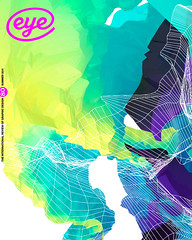Summer 2011
Glamorous layers of interpretation
General Idea
Edited by Frèdèric Bonnet; designed by Gavillet & Rust, JRP Ringier, CHF49, £26, €35, $39.95Recent shows of performance / political art pioneers such as Group Material, David Wojnarowicz, Laurie Anderson, Trisha Brown and Gordon Matta-Clark indicate a resurgence of interest in 1970s and 80s work concerned with social commentary and audience participation.
The early projects of Canadian art collective General Idea also inhabit this familiar territory of typewritten mail art and black and white photographs of amateur-staged ‘happenings’ – but then fast-forwards (powered by humour and ambition) to a colourful, glamorous world with its own distinctive graphic house style, meta-manifestoes, architectural pavilion, muse, pageant, television broadcasts, lifestyle ‘megazine’, boutique and products. ‘We knew Glamour was artificial. We knew that in order to be glamorous we had to become plagiarists, intellectual parasites.’
The book that accompanies this extensive retrospective functions better as an accessory to the exhibition than as an introduction for the uninitiated. To get the most from the show itself demands an investment of time – to engage with all of the ‘showcard’ statements, the witty copywriting detail and the cross-referenced thematic connections and conceits.
A surface reading can be deceptively simple: playing with the language of branding and corporate culture. Yet, like their archaeological excavations, there are many layers to General Idea, and the catalogue does go some way to proposing other interpretations. For example, the ‘Imagevirus’ series is integrated throughout the exhibition (which refocuses attention on the work’s viral nature and resists the temptation to dwell on Aids as the artists’ swan song) but as an early example of an art / design hybrid communication, it deserves separate examination (as in Gregg Bordowitz’s contextual analysis, General Idea: Imagevirus, Afterall Books, 2010).
The exhibition and the catalogue both make more of the sexual (as opposed to camp) aspects of General Idea’s output, separating out Jorge Zontal’s drawing series and showcasing the ‘Orgasm Energy Charts’ and the limited-edition ‘Dick All’ sculpture – in case their heraldic fleur-de-lys symbols were not phallic enough. But the ‘trouple’ always avoided an overt gay agenda and described themselves as ‘antipatriarchal’, where the term ‘queer’ would probably be used now.
I wrote about General Idea in Eye 30, in 1998, four years after the deaths of Zontal and Felix Partz (A. A. Bronson continues as a solo artist). At the time, their loss and legacy resonated even more because of the recent breakthrough of HIV combination therapy, injecting the Pla©ebo and Fin de Siècle pieces with additional poignancy.
Viewing these re-presentations of General Idea’s considerable output now, there are some elements that look a little tired (as the limited technology of 1980s video art so easily does) but it is mainly because we are so familiar with the concepts; pop-up shops, cross-platform media, copyleft, celebrity culture, memes, mission statements, brand values – the terminology has changed but the ‘frames of reference’ have not.
Plagiarism, as GI may have predicted, eats itself. However, there is plenty of inspiration to take away from the group’s ethos; treat design as art (and vice versa), use glamour as a tool, create your own myths and adopt an entrepreneurial spirit on entering the ‘rotating doors of the future’. After you, General Idea.
First published in Eye no. 80 vol. 20 2011
Eye is the world’s most beautiful and collectable graphic design journal, published quarterly for professional designers, students and anyone interested in critical, informed writing about graphic design and visual culture. It is available from all good design bookshops and online at the Eye shop, where you can buy subscriptions, back issues and single copies of the latest issue.

